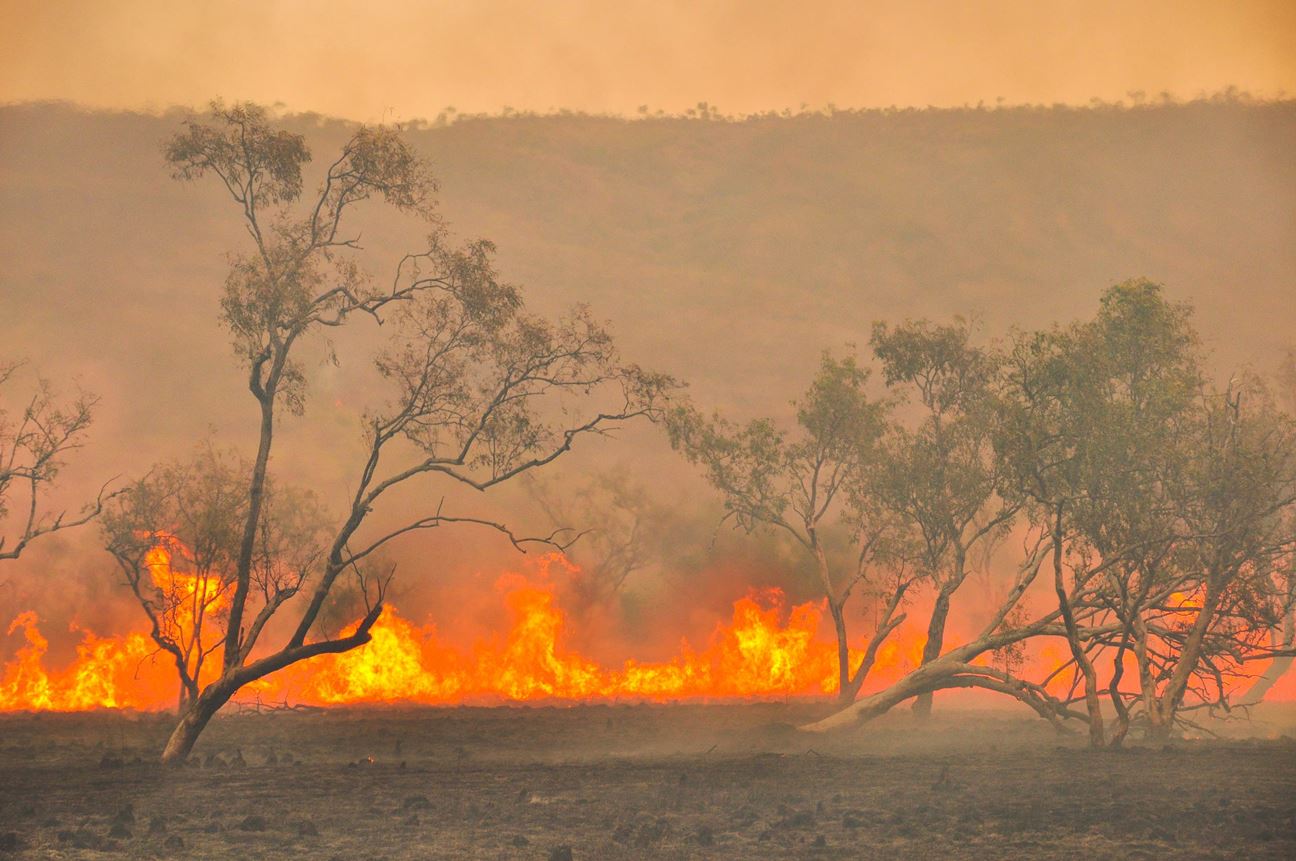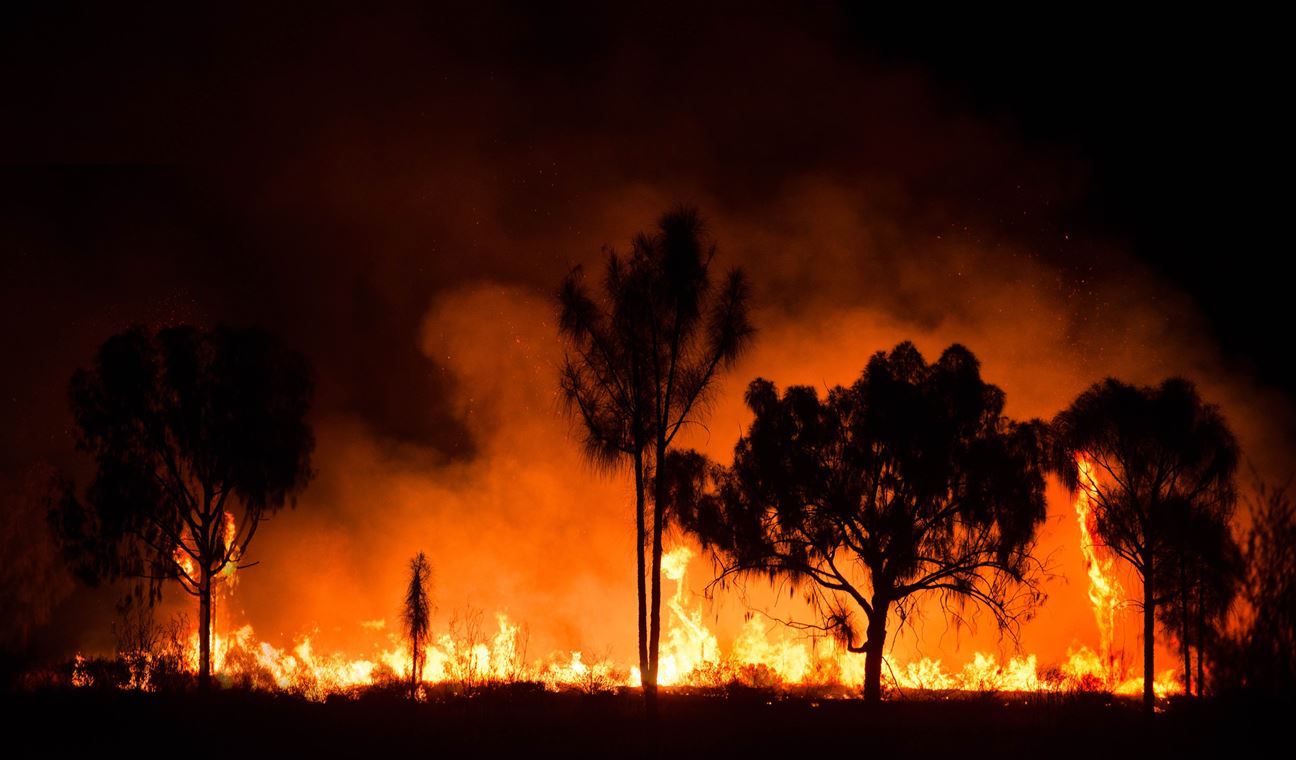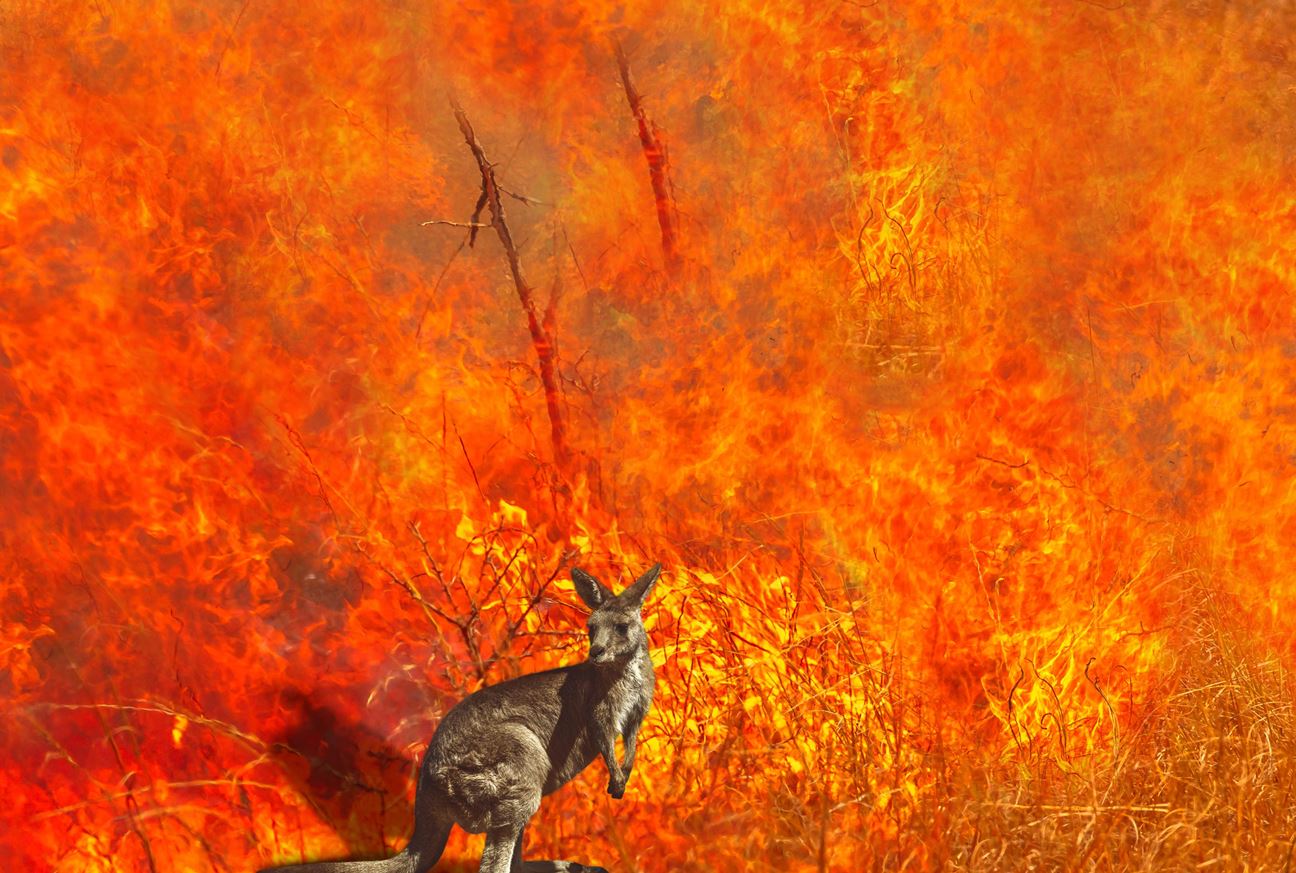A breakdown of the longest and the most devastating of the Australian Bushfires which have taken so much in terms of wildlife, human lives, land, jobs and property.
Record-breaking temperatures, a record-breaking dry season, and record-breaking temperatures- the 2019-20 Australian bushfires in a nutshell. Yes, there have been earlier cases of bushfires turning into firestorms- the appropriate name for extreme and uncontrolled fires that last for ages- but the current one has been the worst one as far as Australia’s fire memory goes. As of Jan 11, 2020, the fires have destroyed 1,07,000 km2 of land, 1 billion animals, 5,900 buildings and 29 people. It’s been devastating. So let’s break this down.
Why Is This Happening?
There are various reasons. Bushfire season happens annually during the dry period. However, this year's drought and temperatures were extremely high and seemed to have worsened the situation a lot. A lot.
Another debated reason is the reduction in ‘prescribed burning’ seen this year. Prescribed burning is the controlled burning of land, done seasonally to ensure hazard reduction, forest management, or farming. However, over the past few years, prescribed burning has reduced due to backlash from environmental groups questioning its ethics and effectiveness. Many hail this as the cause of the fires. However, with the soaring high temperatures, the effectiveness of prescribed burning in preventing fires has been described as almost negligible. It is debated that this is a tactic to divert people from other causes that may have political roots; like climate change policies.
Speaking of climate change, Australia is one of the worst-off developed countries that is affected by global warming. Climate change experts and fire experts have said that climate change and increased temperature due to global warming increase fire frequency. This brings attention to Australia’s climate change policies, which in the December 2019 ‘Climate Change Performance Index’ ranked the worst out of 57 countries, and was titled a ‘regressive force’ - meaning Australia was not fighting but allegedly abetting climate change. Over the past few years, the Australian government has been criticised for downplaying, diverting and avoiding climate change policies as a necessity for the country.
All the above reasons are still tentative and subject to changes. Sadly, as the fires still burn, studying the cause is almost a secondary concern, as Australia tries to stop, control, and save the burning areas.

What Is Being Done to Stop It?
Fire and Rescue NSW and NSW Rural Fire Service are the two main first response firefighting agencies. They have sent thousands of people and hundreds of vehicles across the state in response. Since the fires have direly affected wildlife, the New South Wales National Parks and Wildlife Service and the Forestry Corporation of NSW have been involved in the rescues day and night as well. Human evacuation procedures have been effective in reducing the loss to human life. Various firefighting agencies from all over the country have sent teams to the sights of the firestorms. Volunteer organisations like WIRES Wildlife Rescue and Rapid Relief Team Australia have also had an active role.
Focusing on what they have achieved, other than saving millions of lives, they have also saved 16,000 structures and buildings from burning by physically controlling the fire using manpower. Since the 5th of December 2019, the military started getting involved. As of the 4th of January, there has been a compulsory call-out by the government of 3000 Army Reserve brigade personnel to assist with the fires full-time.
All these people, and more, are working day and night to stop these fires, and have been for 4 months now.

What’s Happening to Wildlife?
The situation is grim. Australia, being an island continent that broke off from what is now Asia, has evolved many species quite unlike those anywhere else on earth. They are especially vulnerable and valuable to the ecosystem. Since Australia is used to bushfires, so the wildlife is too. Animal populations can usually thrive and regrow after a bushfire and find new habitats close-by to inhabit. However, these ongoing fires have been so colossal that none of the wildlife has been able to cope. Reptiles only, come to half a billion deaths - many of which are endangered and only endemic to Australia. Various mammals, arboreal animals and other groups have been severely affected.
Kangaroo Island is Australia’s third-largest island and had huge designated protected areas for animals like sea lions, penguins, koalas, kangaroos and even bees. A third of this island is completely burnt. Fast-moving animals were able to escape with some numbers. However, slower animals, notably koalas, were extremely affected. On this island alone, 25,000 koalas are estimated to have perished.
International attention has been on Australia’s koala population. Koalas are slow-moving and they live by clinging onto eucalyptus trees - the leaves of which are rich in eucalyptus oil - a flammable substance. Their habitat is highly flammable, and they’re not fast enough to leave it. It’s a horrible situation. This devastating hit to the koala population has reduced their numbers so greatly that many ecologists claim it may render their populations extinct in the wild in a few years. It’s almost like what happened to the dinosaurs. We had koalas; they were doing fine, then one great fire came in and is killing them all within months.

What Can I Do to Help?
Well, other than physically go there and stop the fires - donations, donations, donations. There have been 86 reported scams regarding donations, so the best thing to do here is to donate directly to the organisations involved in the rescues and firefighting. The international celebrity attention to the bushfires has greatly helped raise funds to fight it. Various celebrities like Nicole Kidman, P!nk, Elton John, Kylie Jenner, and more have donated from 500,00 USD to 1,000,000 USD to Australia in the past four months. However, as the fires continue burning, the funding needed has been steadily increasing and continuing. These funds are not only for firefighting but especially for wildlife rescues that care for injured and orphaned wildlife which are coming in by the thousands every day.
Another thing that is helpful is sharing well-sourced information about this issue so that more people talk, discuss, donate, and understand the gravity of the situation. Ignoring global warming since it has now been deemed a “political matter” is just hazardous at this point. Pressure on the government, especially international pressure, will help Australia formulate appropriate policies regarding environmental management.
A dire, dire situation indeed, the 2019-20 Australian Bushfires have destroyed so much, and we need to remind ourselves that the fire is burning every day - just because it’s far away let us not desensitise ourselves to it. Let us not lose interest every day, because the fire is still burning away. As Australia burns, let the rest of the world show its compassion and support.